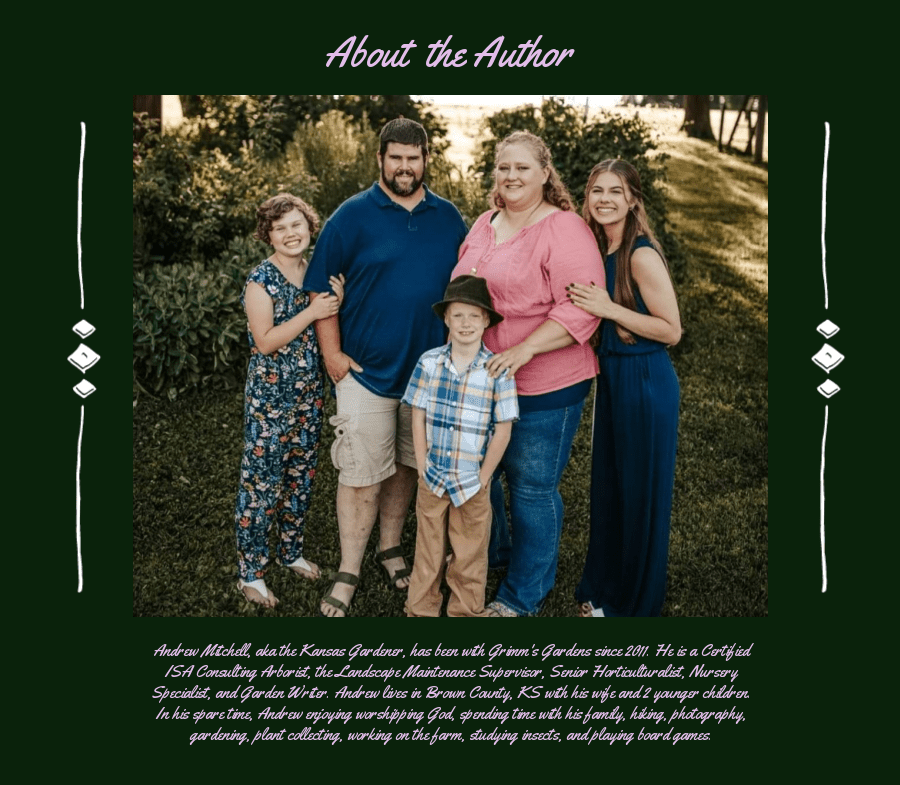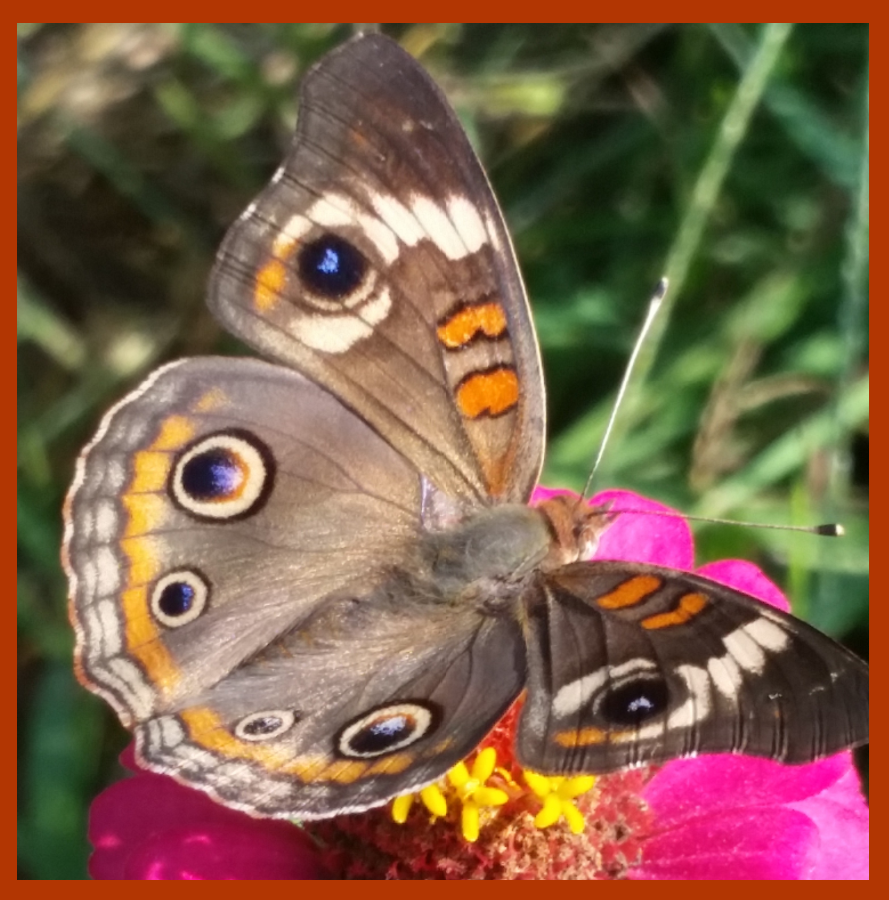It feels strange to not do anything in the butterfly garden, but that is exactly the best thing to do. At least, as long as you have no invasive insects or plants. June is the month of flowers, bees, and butterflies, at least here in Northeast Kansas. It used to be “April showers bring May flowers”, but here it is “May showers bring June flowers”. And I think a lot of that is because we are on the edge of one of the largest prairie systems in the world, the Flint Hills of Kansas.
My butterfly garden, which is really my whole property, gets very little maintenance from me, despite the fact that I do landscape maintenance professionally for Grimm’s Gardens. My own butterfly garden gets weeded rarely, and only for thuggish or invasive plants. I use cultural controls for invasive insects. And annual maintenance is less than many of the gardens I maintain.
What do we hope for when putting in the butterfly garden? I know what I expect-to see butterflies, larvae, and other insect pollinators feeding on flowers and leaves. But for many conventional gardeners, having caterpillars feeding on the foliage of their favorite plants can be hard to take. You have to get past the “kill all bugs mentality”.
Leave the Butterfly Garden Alone
One of the biggest challenges for older gardeners (and brand-new ones) is to let caterpillars and other insects along on their plants. In the butterfly garden, if it is specific for butterflies and moths, this is what needs to be done. Without the caterpillars, there is no next generation of butterflies. Also, without caterpillars, there will be less birds and other wildlife in the area. Most bird species use caterpillars as the primary food for their clutches (baby birds) during the spring and early summer.
Another thing to remember is that many of our insects and pollinators overwinter in the debris (leaf litter) on the ground, or in hollow stems of plants. It can be difficult for many gardeners to leave the butterfly garden plants alone in autumn, and wait for spring to clean the garden.
Ideally, you should wait until the nighttime temperatures are above 40 degrees F continually before cleaning the butterfly garden. However, one way around this is to cut the plant material at the base, and remove it to a nearby brush pile where the insects can still emerge safely. I do this each spring to my butterfly garden.

Dealing with Invasive Insects
One of the things you must do after planting the butterfly garden is to learn which insects are good and which are bad. You are forced to learn new things when you start gardening for butterflies and other pollinators. I have learned more in the 12 years here at Grimm’s than in all my previous years combined. And most of it has been about insects.
Some of the biggest problems in the butterfly garden come from nonnative insects which feed on a variety of plants. Also, there are some native insects which can be detrimental to the garden. Japanese beetles, spotted lanternfly, Asian longhorned beetle, and Emerald ash borer are the worst of the nonnative insects which can cause problems for the butterfly garden. Native insects which can be an issue include blister beetles, flea beetles, bagworms, fall webworms, and tent caterpillars.
For controlling Japanese beetles I start with trap crops. What are trap crops? Plants which are used to catch or control insect pests by attracting them to itself before becoming a problem on other plants. I like to have the biennial common evening primrose for my trap crop for Japanese beetles. For some reason, they go to this plant first, and then I can come along with a bucket of soapy water and knock them off into it, every evening.
If you find Asian longhorned beetle or spotted lanternfly in your garden, contact your state entomologist or extension offices immediately.
For insects such as bagworms, fall webworms, and tent caterpillars, I have found the best solution to be hand cutting or picking from the plant, and then burning the entire mass of them. If you live where you cannot burn them, then drop them into the bucket of soapy water.
Thuggish Plants in the Butterfly Garden
These can be either native or invasive nonnative plants. Hopefully, you started your butterfly garden from scratch, and did not introduce any invasives into it. However, you may have accidentally put in some thuggish natives, having them recommended by other sources. It is good to know how plants spread and grow, and how quickly, before planting them into a maintained garden.
Native Thugs
Some of the thuggish natives include the following plants:
- Western ironweed, Vernonia baldwinii
- American germander, Teucrium canadense
- Common milkweed, Asclepias syriaca
- Whorled milkweed, Asclepias verticillata
- Purple poppy mallow, Callirhoe involucrata
- Ragweeds, Ambrosia species
- Beggarticks, Bidens bipinnata
- False sunflower, Heliopsis helianthoides
- Hairy oldfield aster, Symphyotrichum pilosum
- Ohio spiderwort, Tradescantia ohiensis
- Snow on the mountain, Euphorbia marginata
Nonnative (Invasive Plants) in the Butterfly Garden
- Garlic mustard
- Teasel
- Chicory
- Burdock
- Sericea lespedeza
- Yellow sweetclover
- Wild marijauna
- Poison hemlock
- Crabgrass
Enjoying Your Butterfly Garden
Do not forget to spend time enjoying the butterfly garden. Take photos, watch caterpillars and butterflies coming and going, and set up a chair nearby to observe. I like to sit and watch the garden from a permanent bench I set by the most prominent place. From there, I can watch butterflies, bees, and wasps without disturbing them. My son and I like to see how many caterpillars we can find. I once observed 15 monarch caterpillars on 1 butterfly milkweed plant!

Conclusion
Maintaining the butterfly garden mainly means leaving it alone. Practice self-discipline and try to learn all you can about the insects which visit your garden. Once you have it down, you caa really begin to enjoy seeing caterpillars munching away on your plants.
Happy planting!




